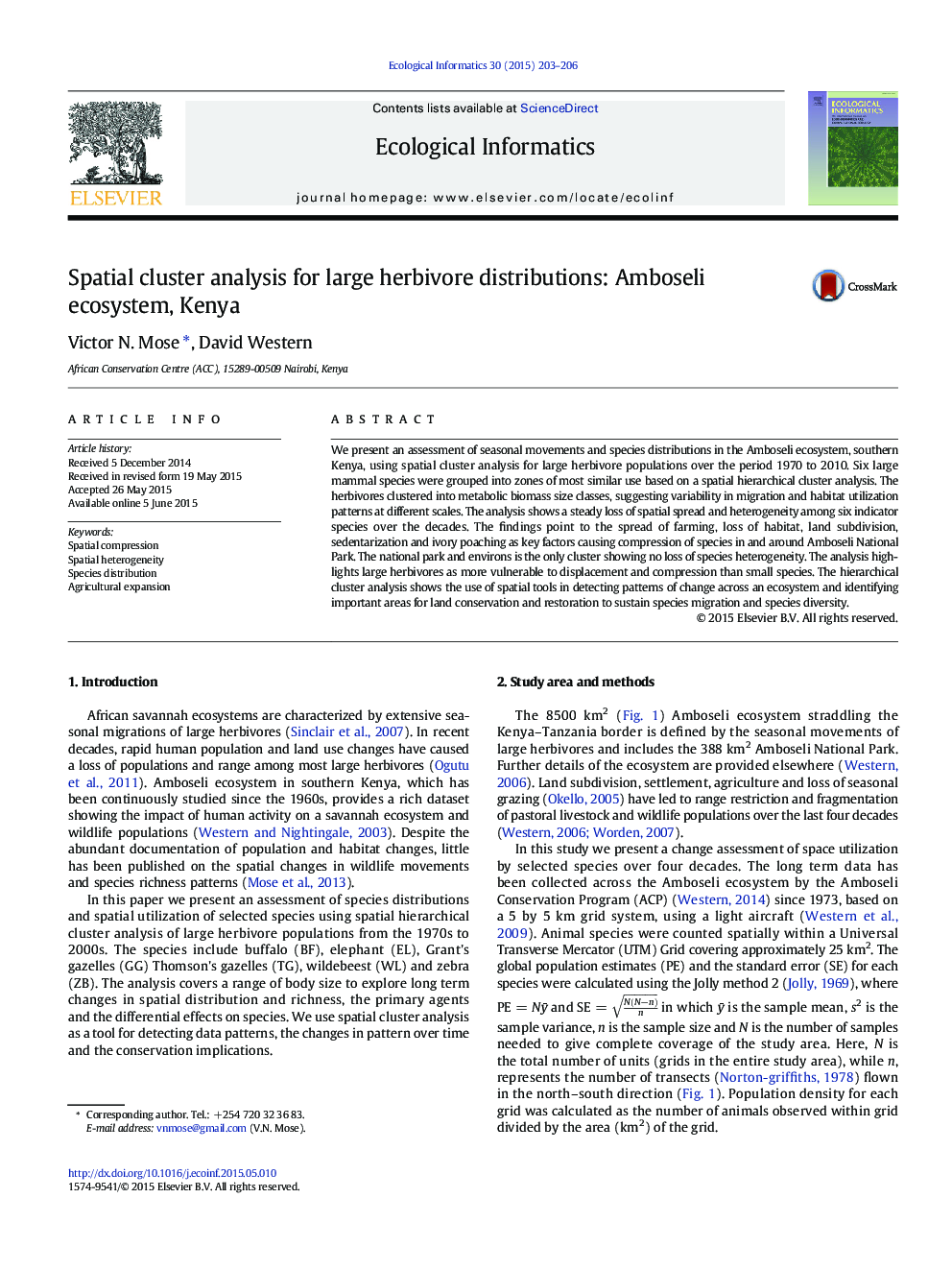| Article ID | Journal | Published Year | Pages | File Type |
|---|---|---|---|---|
| 6295728 | Ecological Informatics | 2015 | 4 Pages |
â¢We analyze large mammal species distribution in Amboseli, Kenya. We use spatial hierarchical clustering technique.â¢Six large mammal species were grouped into zones of most similar use based on a spatial hierarchical cluster analysis. The herbivores clustered into metabolic biomass size classes, suggesting variability in migration and habitat utilization patterns at different scales.â¢Results show significant range contraction of species pointing to increased human activities.
We present an assessment of seasonal movements and species distributions in the Amboseli ecosystem, southern Kenya, using spatial cluster analysis for large herbivore populations over the period 1970 to 2010. Six large mammal species were grouped into zones of most similar use based on a spatial hierarchical cluster analysis. The herbivores clustered into metabolic biomass size classes, suggesting variability in migration and habitat utilization patterns at different scales. The analysis shows a steady loss of spatial spread and heterogeneity among six indicator species over the decades. The findings point to the spread of farming, loss of habitat, land subdivision, sedentarization and ivory poaching as key factors causing compression of species in and around Amboseli National Park. The national park and environs is the only cluster showing no loss of species heterogeneity. The analysis highlights large herbivores as more vulnerable to displacement and compression than small species. The hierarchical cluster analysis shows the use of spatial tools in detecting patterns of change across an ecosystem and identifying important areas for land conservation and restoration to sustain species migration and species diversity.
